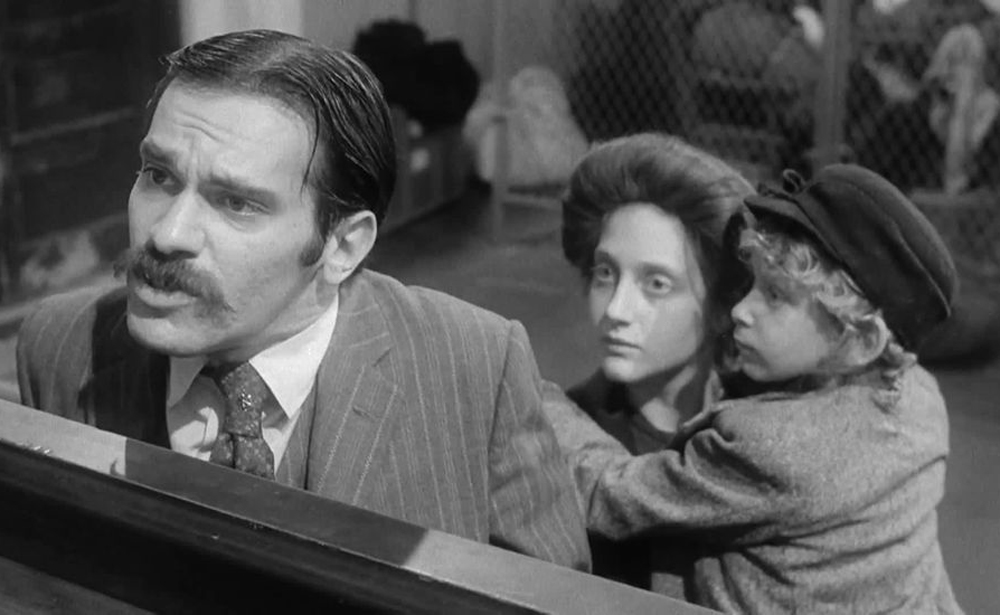Marisa Silver could remember from conversations around the dinner table that her parents Joan Micklin Silver and Raphael Silver were having about the production of “Hester Street” that no matter what obstacles were in their way, they were going to realize their vision on screen.
“Famously, they had one horse on ‘Hester Street’ and they wanted more, so they painted one side of the horse white and the other side of the horse was brown, so if the horse was going right to left, it was brown and if it was going from left to right, it was white,” Marisa Silver recalled recently at a special screening of “Hester Street” in Los Angeles on the occasion of a new 4K restoration of the film. “So there were all sorts of very DIY ways of figuring out how to do it and they did it.”
“No matter what anybody would say, they would say, ‘I can do it,’” remembered Carol Kane. “And guess what? They were right. They did it.”
As the filmmaker Richard Trank, who moderated the conversation with Silver and Kane at the Museum of Tolerance, would note, the Silvers were swimming against the tide with “Hester Street” even before production commenced, entering a marketplace where the popular movies of the day were “Cooley High,” “Barry Lyndon,” “One Flew Over the Cuckoo’s Nest,” “Funny Lady,” and “The Great Waldo Pepper” with a black-and-white adaptation of Abraham Cahan’s 1896 short story “Yekl, A Tale of the Ghetto” filmed mostly in Yiddish. However, Joan Micklin Silver had faced enough challenges already as a woman trying to break into the film industry as a director to do anything less than exactly what she wanted, supported by her husband Raphael, who put his real estate development business on hold to serve as the producer on “Hester Street,” and what may have made the film an anachronism at the time continues to make it distinctive today.
“It’s an immigrant story and it’s all about how much do you want to assimilate and how much do you want to retain who you are,” explained Silver about the story of Gitl (Kane), who makes the trek from Eastern Europe to America at the turn of the 20th century to join her husband Yankel (Steven Keats), whose three years already living in New York has radically changed the dynamics of their relationship, even with a young son together to consider. “What I love about the portrait of Gitl and how [Kane] plays it so beautifully is she doesn’t want to assimilate entirely. She wants to hold onto the things of value. She wants to find a way to take from the new, but to hold onto her identity and the old and I think that’s a true experience of immigration now and forever.”
Marisa Silver, who would become a promising director in her own right during the 1980s with films such as “Old Enough” and “Permanent Record” before turning into a novelist, couldn’t remember exactly how Cahan’s novella first entered her mother’s consciousness, but that she couldn’t let go of it after it did, having strong interest generally in stories related to her Jewish heritage and the immigrant experience.
“Her mother and father and both emigrated from Russia, and my mother made herself up out of nothing as far as being a filmmaker,” Silver reminisced about her mother, who passed away earlier this year at 85. “She was not trained in film. She had studied music at college, but she loved movies until the end of her life. I remember she told a story about how she went to see “The Apu Trilogy” by Satyajit Ray at a theater in Cleveland and she came out of that theater and thought, ‘I could do that’ — I don’t think she meant she could be as brilliant as him, but I think she thought, ‘I can do this. I can tell a cinematic story.’”
Joan Micklin Silver’s confidence in herself may have been unshakeable, but Marisa recalled how her mother had faced sexism from the powers that be, hearing stories of how she would go to a meeting where “a guy would say, ‘Why should we give a woman a job when there are so many men to give the job to?’” adding, “It was really clear to her and to my dad that she was never going to get a job to direct a film unless they made a film themselves.”
Despite no formal training in filmmaking, Joan Micklin Silver had put in the time as a cinephile, watching Vittorio de Sica and Jean Renoir films and taught herself to write screenplays, resulting in a first feature that was polished enough to secure the participation of Kane and go on to be nominated for a Writers Guild Award in 1976. Though clearly the writer/director had the skills, it was fitting that she had shifted the perspective from Yankel to Gitl in adapting “Yekl, A Tale of the Ghetto,” turning the tale into a story of empowerment for a woman who no one was expecting much from.
“When I read the script, I felt like I was watching the movie and I had not had that experience before,” said Kane, who would land her first starring role in “Hester Street” and eventually earn an Oscar nomination for Best Actress, playing Gitl. “That was my ancestry, but I didn’t know much anything about it — I asked my grandmother about our ancestry and she didn’t want to be back in the day when she spoke Yiddish. She wanted to be an American — so I read many, many books and saw many, many photographs and Joan provided me with so much information and the script was so beautiful, it guided me in every way with being able to play that character.”
Although Kane could ease into the character, learning to speak in Yiddish before even auditioning, the Silvers hustled to make the film happen around her, putting together a limited partnership to raise the $350,000 budget for the film, which dazzles in its period-specific details of the Lower East Side. Raphael worked the phones, cold-calling other filmmakers in New York to find out how one set up a production and then eventually distribute it.
“It’s a crazy story when your father said, “I’m going to distribute the film myself, I went insane,” Kane recalled with a laugh. “I thought that’s ridiculous. I said, ‘Ray, you can’t do that.’ And meanwhile, unbeknownst to me, he had talked to John Cassavetes, who told him what to do and they did this brilliant thing. Ray was so bright and brave that he did it. It was the best partnership.”
Before the evening ended, Marisa Silver wanted to give credit where it was due to another partnership – the one forged between her parents and Kane, who was initially thought to be too pricey to bring in when Joan and Raphael had first seen her in the Canadian film “The White Wedding” and suspected her travel costs might be prohibitive, only to learn she lived in Manhattan. As Kane recently told Bilge Ebiri of New York Magazine, her Oscar campaign was just as improbable, luring the studio publicist Max Burkett out of retirement to use his considerable Rolodex of Golden Age Hollywood Academy members to convince them to screen the film, lugging around the film print from one home screening room to another.
Bolstered by the accolades, the film would go onto make over $5 million and continue to find supporters, mostly notably Charles Cohen, who not only restored “Hester Street” to its original glory and erased the scramble the Silvers once faced to find the theaters to put it in by placing it in his own — the NuArt in Los Angeles and the Quad Cinema in New York where it just began its theatrical release — and has set about reviving Silver’s entire filmography in recent years with “Between the Lines” and “A Fish in the Bathtub.” When asked about why the film has endured, Marisa Silver attributed it to Kane’s performance.
“That performance resonates across so many different lives to me. It’s not just about that one character. She was able to encapsulate the experience of so many different people, marginalized, oppressed,” said Silver. “That’s why I think the film lives on.”
Added Kane to close out the conversation, “That performance is largely due to the writing of your mother. That’s where my performance stems from.”
“Hester Street” is open at the NuArt in Los Angeles, the Quad Cinema in New York and the Caffritz Hall Cinema in Washington DC. It will open on October 8th at the Laemmle Encino Town Center 5 on October 8th and the University Wisconsin-Madison Cinematheque, the Cleveland Cinematheque on October 9th and 10th and the Cornell Cinema in Ithaca on October 21st and 23rd.




